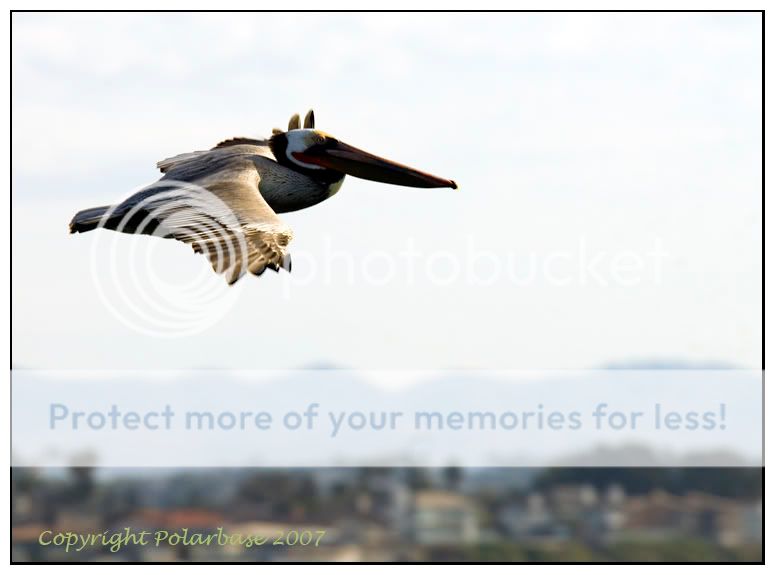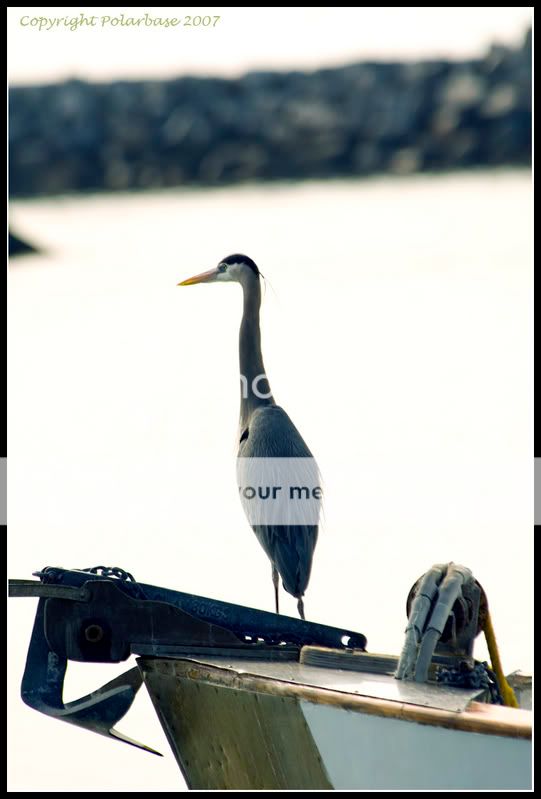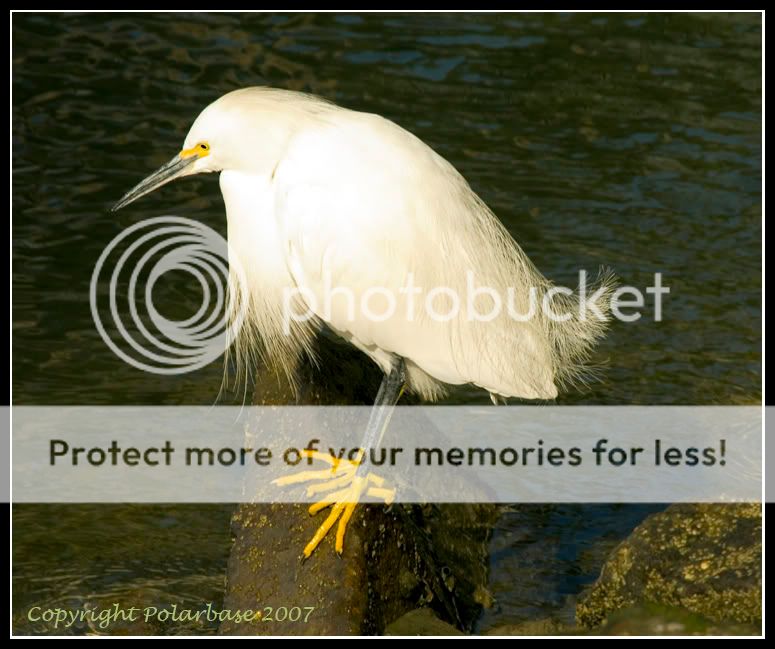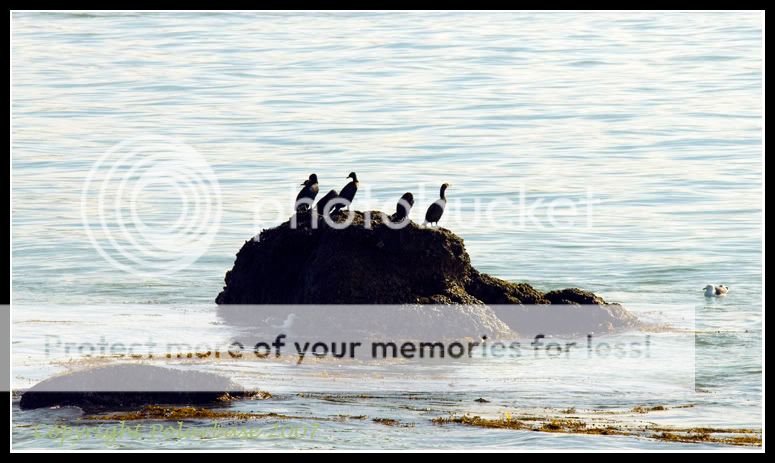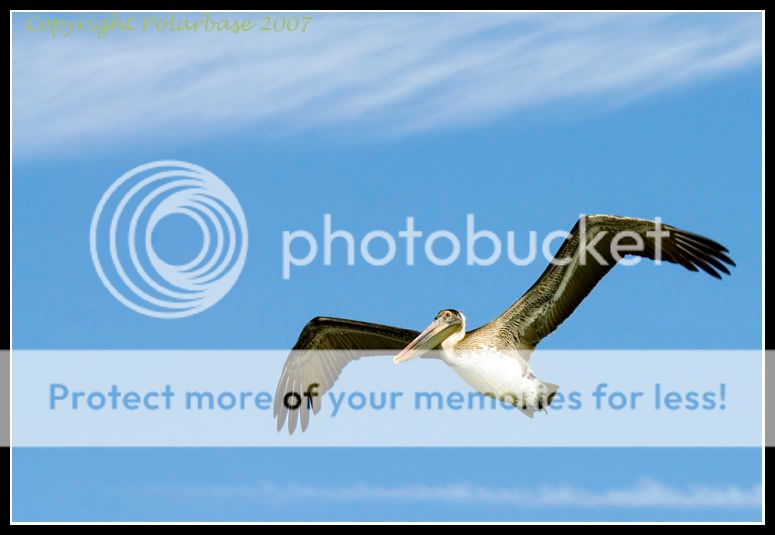Kevin,
Welcome to our forum!
I appreciate your efforts. Your pictures show promise, but they also have a lot of issues.
The first shot, of the brown pelican in flight: This shot suffers from the angle of light putting the face into shadow, obscuring detail where one's eye is naturally drawn and most wants to see. Also, the way that the three feathers of the wingtip of the rear wing converge with the pelican's head is somewhat visually confusing. I also find the cityscape competes for visual attention, and does not add anything positive to the picture, so higher framing or a tighter crop would've perhaps been in order, perhaps showing the ridge, but not the city. I do commend you for catching the bird in flight.
The second shot, of the great blue heron on the boat: The bird's pose, turned away from the viewer, looking out of the frame, apparently at nothing in particular, does not work for me. The boat is unflattering and distracting, as is the blurred jetty. The bird's dark body against the bright water is also problematic for me.
The snowy egret: You did well to get so close to the bird. However, this shot would've been better, in my opinion, if the shot had been exposed slightly darker, holding the bird's highlight details better, and making the rest a little darker and contrastier. Again, the bird is turned slightly away from the viewer in a manner which does not flatter the overall composition, and, again, the bird is gazing out of the frame, at something the viewer can't see. And, similar to the great blue heron shot, the pose of the bird is not dynamic, does not show interesting behaviors, while also not working very effectively as a static portrait.
The last shot, of the (double crested, or pelagic?) cormorants perched on the rocks: The birds are so distant and small, and so backlit, that you cannot even tell clearly what they are. Also, their poses are static and somewhat haphazard.
I hope this all doesn't sound too harsh. It does look like you have the potential to do fine photography with birds, and hope you continue in this direction.
